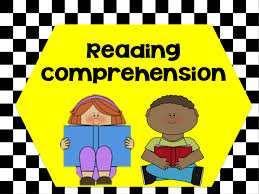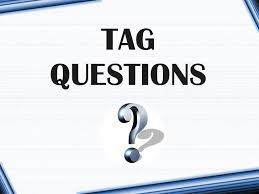Sponsored Links
Online Automated E-Learning Reviewer for National Achievement Test – High School, 4th Year
Online Automated E-Learning Reviewer for National Achievement Test – High School, 4th Year
By: Roe S. Riofrio

This Online Automated E-Learning Reviewer for National Achievement Test – High School, 4th Year was made to help students prepare for the National Achievement Test in the Philippines.
The National Achievement Test (NAT) is a diagnostic examination given by the Department of Education (DepEd) to all private and public schools in the country in order to measure the mastery of learning of students. It is given to Grade 3 (for primary education), Grade 6 (for intermediate education) and Fourth Year (for secondary education) students to find out whether the competencies suggested in the 2013 Revised Education Curriculum have been learned and/or mastered. There are five areas of examinations: English, Filipino, Mathematics, Scienceand Araling Panlipunan.
In this online reviewer the students' knowledge and mastery over their English Subject is measured:
The test covers the following topics in English and before you start your test let us recall your lessons about the given topics in English:
Articles
 The 3 articles in English are a, an and the. The learner has to decide noun-by-noun which one of the articles to use*. In fact, there are 4 choices to make, because sometimes no article is necessary. Native-speakers, of course, use the articles correctly without thinking. English learners, on the other hand, need to have some guidelines for making the right choice - particularly those learners whose own language does not have articles, such as Japanese or Korean. The guidelines that follow here should help ESL students to a basic understanding of English article use.
The 3 articles in English are a, an and the. The learner has to decide noun-by-noun which one of the articles to use*. In fact, there are 4 choices to make, because sometimes no article is necessary. Native-speakers, of course, use the articles correctly without thinking. English learners, on the other hand, need to have some guidelines for making the right choice - particularly those learners whose own language does not have articles, such as Japanese or Korean. The guidelines that follow here should help ESL students to a basic understanding of English article use.
The most important first step in choosing the correct article is to categorize the noun as count or uncount**:
- A count noun is a noun that can have a number in front of it: 1 teacher, 3 books, 76 trombones, 1,000,000 people.
- An uncount noun is a noun that cannot have a number put in front of it: 1 water, 2 lucks, 10 airs, 21 oils, 39 informations. Once you have correctly categorized the noun (using your dictionary if necessary), the following "rules" apply:
Uncount nouns
- You cannot say a/an with an uncount noun.
- You cannot put a number in front of an uncount noun. (You cannot make an uncount noun plural.)
- You use an uncount noun with no article if you mean that thing in general.
- You use the with an uncount noun when you are talking about a particular example of that thing.
Count nouns
- You can put a number in front of a count noun. (You can make a count noun plural.)
- You can put both a/an and the in front of a count noun.
- You must put an article** in front of a singular count noun.
- You use a plural count noun with no article if you mean all or any of that thing.
- You usually use a/an with a count noun the first time you say or write that noun.
-
You use the with count nouns:
- the second and subsequent times you use the noun in a piece of speech or writing
- when the listener knows what you are referring to (maybe because there is only one of that thing)
- You use an (not a) when the next word (adverb, adjective, noun) starts with a vowel sound.
Note:
- The above rules apply whether there is or there is not an adjective in front of the noun.
-
Some nouns can be either count or uncount, depending on the context and meaning:
- Do you have paper? I want to draw a picture. (uncount = a sheet of paper)
- Can you get me a paper when you’re at the shop? (count = a newspaper)
- Uncount nouns are often preceded by phrases such as: a lot of .. (luck), a piece of .. (cake), a bottle of .. (milk), a grain of .. (rice).
* Instead of an article, the noun can also be preceded by a determiner such as this, that, some, many or my, his, our, etc.
Tag Questions
|
|
A tag question is a special construction in English. It is a statement followed by a mini-question. The whole sentence is a "tag question", and the mini-question at the end is called a "question tag".
A "tag" is something small that we add to something larger. For example, the little piece of cloth added to a shirt showing size or washing instructions is a tag.
We use tag questions at the end of statements to ask for confirmation. They mean something like: "Am I right?" or "Do you agree?" They are very common in English.
The basic structure is:
|
statement |
question tag |
|
+ |
- |
|
Snow is white, |
isn't it? |
|
- |
+ |
|
You don't like me, |
do you? |
Notice that the question tag repeats the auxiliary verb (or main verb when be) from the statement and changes it to negative or positive.
http://www.englishclub.com/grammar/verbs-questions-tag.htm
- Reported Speech

Reported Speech
When do we use reported speech? Sometimes someone says a sentence, for example "I'm going to the cinema tonight". Later, maybe we want to tell someone else what the first person said.
Here's how it works:
We use a 'reporting verb' like 'say' or 'tell'. If this verb is in the present tense, it's easy. We just put 'she says' and then the sentence:
- Direct speech: I like ice cream.
- Reported speech: She says she likes ice cream.
We don't need to change the tense, though probably we do need to change the 'person' from 'I' to 'she', for example. We also may need to change words like 'my' and 'your'.
But, if the reporting verb is in the past tense, then usually we change the tenses in the reported speech:
- Direct speech: I like ice cream.
- Reported speech: She said she liked ice cream.
|
Tense |
Direct Speech |
Reported Speech |
|
present simple |
I like ice cream |
She said (that) she liked ice cream. |
|
present continuous |
I am living in London |
She said she was living in London. |
|
past simple |
I bought a car |
She said she had bought a car OR She said she bought a car. |
|
past continuous |
I was walking along the street |
She said she had been walking along the street. |
|
present perfect |
I haven't seen Julie |
She said she hadn't seen Julie. |
|
past perfect* |
I had taken English lessons before |
She said she had taken English lessons before. |
|
will |
I'll see you later |
She said she would see me later. |
|
would* |
I would help, but.. |
She said she would help but... |
|
can |
I can speak perfect English |
She said she could speak perfect English. |
|
could* |
I could swim when I was four |
She said she could swim when she was four. |
|
shall |
I shall come later |
She said she would come later. |
|
should* |
I should call my mother |
She said she should call her mother |
|
might* |
"I might be late" |
She said she might be late |
|
must |
"I must study at the weekend" |
She said she must study at the weekend OR She said she had to study at the weekend |
* doesn't change.
Occasionally, we don't need to change the present tense into the past if the information in direct speech is still true (but this is only for things which are general facts, and even then usually we like to change the tense):
- Direct speech: The sky is blue.
- Reported speech: She said that the sky is/was blue.
http://www.perfect-english-grammar.com/reported-speech.html
- Reading Comprehension
 Context Clues
Context Clues
Part of reading comprehension involves using the other words in a sentence or passage to understand an unknown word. An author often includes hints, or clues, to help the reader expand vocabulary and grasp the meaning of the passage. Skill in using context clues enables a reader to comprehend advance texts.
- Vocabulary Development

Synonyms and Antonyms
Synonym
A synonym is a word that means exactly the same as, or very nearly the same as, another word in the same language. For example, "close" is a synonym of "shut".
Note that a synonym may share an identical meaning with another word, but the two words are not necessarily interchangeable. For example, "blow up" and "explode" have the same meaning, but "blow up" is informal (used more in speech) and "explode" is more formal (used more in writing and careful speech).
Here are some examples of synonyms:
|
synonyms |
||
|
close |
shut |
|
|
blow up |
explode |
|
|
blow up |
inflate |
|
|
shallow |
superficial |
|
|
eager |
earnest |
keen |
|
spontaneous |
impromptu |
unplanned |
You can find synonyms in a synonym dictionary (thesaurus).
Antonym
An antonym is a word that means the opposite of another word. For example "bad" is an antonym of "good". Here are some more examples:
|
prefix |
antonyms |
part of speech |
|
|
|
good |
bad |
adjective |
|
small |
big |
adjective |
|
|
easy |
hard |
adjective |
|
|
soft |
hard |
adjective |
|
|
male |
female |
adjective |
|
|
up |
down |
preposition |
|
|
go |
come |
verb |
|
|
made by adding prefix un- |
able |
unable |
adjective |
|
selfish |
unselfish |
adjective |
|
|
do |
undo |
verb |
|
|
made by adding prefix in- |
decent |
indecent |
adjective |
|
tolerant |
intolerant |
adjective |
|
|
human |
inhuman |
adjective |
|
|
made by adding prefix non- |
conformist |
nonconformist |
adjective |
|
essential |
nonessential |
adjective |
|
|
sense |
nonsense |
noun |
|
http://www.englishclub.com/vocabulary/synonyms-antonyms.htm
- Conjunctions
Coordinating CONJUNCTIONS
Conjunctions are words used as joiners.
Different kinds of conjunctions join different kinds of grammatical structures.
The following are the kinds of conjunctions:
A. COORDINATING CONJUNCTIONS (FANBOYS)
for, and, nor, but, or, yet, so
Coordinating conjunctionsjoin equals to one another:
words to words, phrases to phrases, clauses to clauses.

Coordinating conjunctions usually form looser connections than other conjunctions do.

Coordinating conjunctions go in between items joined, not at the beginning or end.
http://www.towson.edu/ows/conjunctions.htm
- Preposition
Prepositions of Place: at, in, on
In general, we use:
- atfor a POINT
- infor an ENCLOSED SPACE
- onfor a SURFACE
|
at |
in |
on |
|
POINT |
ENCLOSED SPACE |
SURFACE |
|
at the corner |
in the garden |
on the wall |
|
at the bus stop |
in London |
on the ceiling |
|
at the door |
in France |
on the door |
|
at the top of the page |
in a box |
on the cover |
|
at the end of the road |
in my pocket |
on the floor |
|
at the entrance |
in my wallet |
on the carpet |
|
at the crossroads |
in a building |
on the menu |
|
at the front desk |
in a car |
on a page |
Look at these examples:
- Jane is waiting for you at the bus stop.
- The shop is at the end of the street.
- My plane stopped at Dubai and Hanoi and arrived in Bangkok two hours late.
- When will you arrive at the office?
- Do you work in an office?
- I have a meeting in New York.
- Do you live in Japan?
- Jupiter is in the Solar System.
- The author's name is on the cover of the book.
- There are no prices on this menu.
- You are standing on my foot.
- There was a "no smoking" sign on the wall.
- I live on the 7th floor at 21 Oxford Street in London.
Notice the use of the prepositions of place at, in and on in these standard expressions:
|
at |
in |
on |
|
at home |
in a car |
on a bus |
|
at work |
in a taxi |
on a train |
|
at school |
in a helicopter |
on a plane |
|
at university |
in a boat |
on a ship |
|
at college |
in a lift (elevator) |
on a bicycle, on a motorbike |
|
at the top |
in the newspaper |
on a horse, on an elephant |
|
at the bottom |
in the sky |
on the radio, on television |
|
at the side |
in a row |
on the left, on the right |
|
at reception |
in Oxford Street |
on the way |
- Verbs
Regular and Irregular Verbs
Verbs are subdivided into two groups, regular verbs and irregular verbs, on the basis of how their past tense and past participles are formed. See below for tips on how to distinguish between them.
Regular Verbs
Most verbs are regular verbs. Regular verbs are those whose past tense and past participles are formed by adding a -d or an -ed to the end of the verb.
"To roll" is a good example of a regular verb:
- roll, rolled, rolled
Sometimes the last consonant must be doubled before adding the -ed ending. For example:
- plan, planned, planned
Irregular Verbs
There is no formula to predict how an irregular verb will form its past-tense and past-participle forms. There are over 250 irregular verbs in English. Although they do not follow a formula, there are some fairly common irregular forms. Some of these forms are:
- break, broke, broken
- cut, cut, cut
- run, ran, run
- meet, met, met
- come, came, come
- repay, repaid, repaid
- swim, swam, swum
- be was/were been
You may start taking the test now. Good luck!
Whether you use this reviewer or not as your key to pass the exam, the most important thing you need to do before taking any examinations is to prepare yourself, be healthy and study harder beforehand. Yes, you can always rely on your schema but as the lines says, “An ounce of prevention is better than a pound of cure.” Thank you very much!
Something about the Author: Mr. Roe S. Riofrio has been teaching at Mandaluyong High School since November 2009. He teaches English to Grade 7 students. He is also currently taking his Masters Degree in Instructional Technology at Rizal Technological University, Mandaluyong. He would also like to thank his Professor in Advance Instructional Techmology, Prof. Jensen dg. Mañebog and his classmates for the support and motivation for him to finish this online reviewer. May God bless us always!
Note: If this reviewer is assigned to you by your teacher (or school), 'print screen' and print your score/result after taking this exam/reviewer, and submit it to your school authority.
After answering this reviewer, share it to your friends by clicking the SHARE button below. You may also want to leave a remark using the comment section below.
Photos courtesy of www.google.com/image






Add new comment